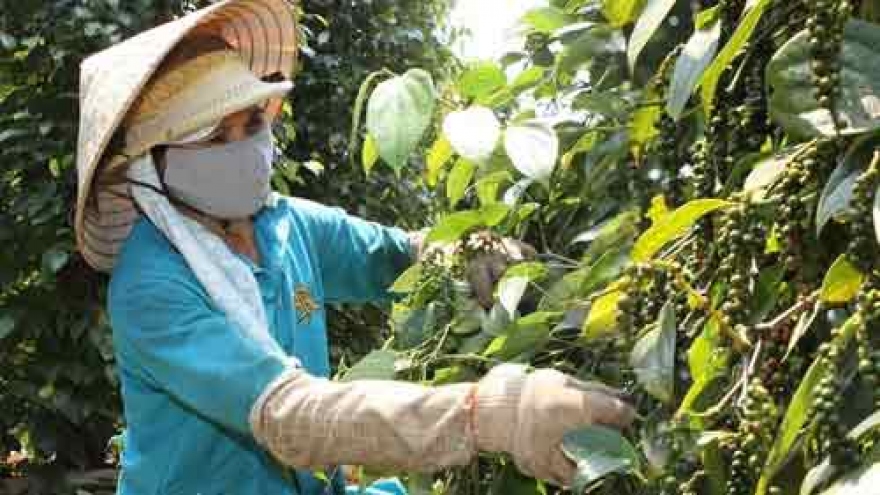Vietnamese pepper exports surge
Vietnam earned US$1.2 billion from the export of nearly 145,500 tonnes of pepper in the first nine months of the year, a year-on-year increase of 31.5% in volume and 13.1% in value.
 |
The Vietnam Pepper Association forecast that pepper exports will reach 150,000 tonnes this year.
The average pepper export price in the first eight months of the year was US$8,141 per tonne, a reduction of 13.6% over the same period last year.
In the domestic market, pepper prices have fluctuated wildly, dropping to around VND130,000 per kilo in March then jumping to VND170,000 per kilo in early June and then slumping again.
Vietnam accounted for 32% of the world’s total pepper output and held more than 56% of world market share, according to the association.
Vietnamese pepper products are exported to 100 countries and territories, with Asia, Europe and the US being the biggest markets.
Do Ha Nam, the association’s chairman, said the industry had seen robust growth, but faced challenges related to climate change and stunted vines on farms.
High pepper prices in recent years have persuaded farmers to expand cultivation, even on unsuitable land without any planning, while the overuse of fertilisers has caused plants to degenerate quickly and be more vulnerable to disease.
"New free trade agreements will open opportunities for the industry to boost exports but there are challenges, especially in ensuring quality, hygiene and food safety," he said.
With import markets like the US and EU demanding higher food safety requirements, farmers, processors and distributors need to focus more on safety and hygiene.
Rapid growth of pepper farming
The area being used for pepper cultivation has increased rapidly in the past years, reaching 85,000ha by the end of last year.
The figure reached 100,000ha by the end of the first quarter of this year, doubling the figure set by the Ministry of Agriculture and Rural Development’s master zoning plan for the development of the pepper industry by 2020.
Many farmers in the Central Highlands and southern provinces had chopped down their rubber, cashew and coffee trees to plant pepper.
Tran Thi Hien, deputy head of the Crop Production and Plant Protection Department in Ba Ria-Vung Tau Province, said under the provincial zoning plan, the province targets to have 8,300ha under pepper cultivation by 2020.
But at present, the pepper cultivation area in the province already reached more than 11,160ha, she said.
Pepper prices might remain high in the short term, but with the increase in cultivation, supply would exceed demand and prices would drop, affecting the income of farmers, she said.
According to an agricultural official in the province’s Chau Duc District, the district has recommended farmers not rush to plant the spice tree, but with the current high profit brought from pepper cultivation, it is very hard to stop farmers from expanding the cultivation.


